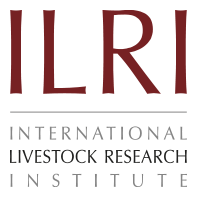Wuzhishan
Ecological condition: Wuzhishan Pig is mainly distributed in the middle of the Wuzhi Mountain, Hainan Island. The climate of the island falls within the Torrid and Semi-Torrid zone. The island has unique natural geographic features and ecology. Because of the geographical isolation and no introduction of exotic pigs over the years, a high rate of inbreeding is practiced with some mating of offspring to their mothers. This has resulted in the Wuzhishan Pig having small body sizes and slow growth. It is also known as the mouse pig. According to classification of Pig Breeds in China, Wuzhishan Pig was classified as South China type (Zhang et al, 1986).
There were ten thousand Wuzhishan pigs in Hainan Province in the 1960's. Twenty years later they were regarded as a 93bad breed" that was to be eradicated mainly because of their slow growth rate. Some exotic pig breeds with high performance were imported to be used as crossbreds which resulted in the dramatic decline of the total number of Wuzhishan Pigs to six hundred. Three animals were transferred into Beijing for conservation in 1989, ex stiu conservation became successful in Beijing seven years later, and in 2004 there were more than two hundred Wuzhishan pigs at Institute of Animal Science, Chinese Academy of Agricultural Sciences in Beijing.
Appearance characteristics: An adult sow is about 50-70 cm long, 35-45 cm high, 65-80 cm wide, with a body weight of 30- 35 kg, but not exceeding 40kg. Boars usually show early sexual maturity. Sows can be mated from three or four months of age. The sow has low reproduction performance with only four piglets in the first parity, six or eight piglets in the following parities.
Utilization style:
1. Experimental animal: Wuzhishan Pig is a special miniature pig in China. The adult animal has a small body size, with physiological and biochemical general indices very similar to human's. The Wuzhishan Pig also has high disease resistance, and very good wound healing capabilities. The heart, small intestine and guts of the pig are similar to those in the human body, hence the animals can be used as a research model of cardiovascular disease in man, organ transplants, and as a tool for comparative medical research. Its skin can also be used for skin transplant.
2. Conservation of pure breed: Wuzhishan pig breeding farm of Academy of Agricultural Sciences in Hainan province was set up in 1990's, and now there are more than 200 animals comprising 12 lines. Currently there are more than two hundred Wuzhishan Pigs for ex situ preservation in the Institute of Animal Science, The Chinese Academy of Agricultural Sciences in Beijing. Here full-sib mating has been carried out and inbreeding coefficient is more than 0.8.
Evaluation of the genetic diversity: The DNA fingerprints of eight offspring of three Wuzhishan original pigs in Beijing were analyzed with probes 33.6. The identity coefficient between them was 0.701, which was significantly higher than the reported value of other commercial breeds by the same probe (Feng et al, 1998). The analysis with RAPD showed that the coefficient within the Wuzhishan population was larger than 0.75, the purification and inbreeding of the original breed were significant higher than the control group, Large White, Landrace and Duroc breeds (Huang et al, 2000).
Using a set of 27 microsatellite markers recommended by the Food and Agriculture Organization of the United Nations and International Society of Animal Genetics (FAO-ISAG), Sun et al (2002) studied the genetic variation of Wuzhishan breed and found all markers polymorphic with polymorphic information content of 0.84. Genetic clustering of the breed with 17 other Chinese indigenous pig breeds in their study showed that the Wuzhishan breed was genetically closest to the Huainan breed. Fan et al (2003) characterized the genetic diversity on natural populations of Chinese miniature pig breeds with 37 microsatellite markers. All of these markers were polymorphic in Wuzhishan breed. The mean, observed and effective alleles were 5.703 and 4.293 respectively while the observed and expected heterozygosity were 0.498 and 0.707 respectively.
Reference
1. Fan B., S.L. Yang and B. LiuA3ACCharacterization of the genetic diversity on natural populations of Chinese miniature pig breedsA3AC2003A3ACAnimal Genetics 34:6 465-466A1A3
2. Feng S.T. and Chen Y.C., Studies on the biological characteristics, ex-situ breeding and genetic diversity of Wuzhishan Pig. Chinese Biodiversity. 1998, 6(3):172-179.
3. Huang L.G., X.L. Wang, C. Wang C, RAPD analysis of Hainan Wushishan Pig. Hainan Agricultural Science and Technology. 2000, 4: 1-4.
4. Sun F., Y. Zhang and Z. Wang, Study on the genetic relationship among 18 Chinese local breeds using microsatellite DNA markers, 7th World Congress on Genetics Applied to Livestock Production, August 19-23, 2002, Montpellier, France.
5. Zhang Z.G., B.T. Li, X.H. Chen, Pig Breeds in China. Shanghai Scientific and Technical Publishers. 1986, pp70-7.





